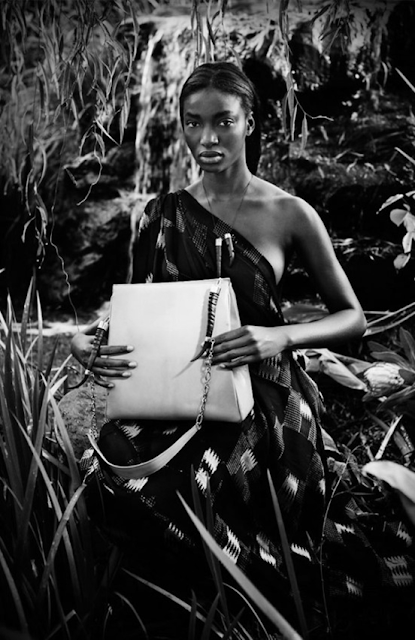photography credits: SA brand Okapi
I don’t want to approach this subject from a creative
process standpoint. A lot of marketers tend to place tradition at the forefront
of their brand communication. A certain French champagne brand has been around
since the 1950s, but brands itself around 17th century ideals. There
are many brands which do exactly that, and we've come to accept them. My
understanding of what tradition is, is that it is ‘the way in which things are done’,
or ‘a certain way of doing things’. A grape cultivator has the objective to
cultivate his crop in a manner which best suits his business. The grape
cultivator can either choose to stick to an existing method, one which has
existed for centuries, or he could ‘innovate’ and begin a new method which he’ll
be credited for starting. To my understanding, the former case would be following
a particular tradition, and the latter case would be beginning one’s own
tradition. Both these scenarios are important to be able to distinguish because
of the luxury industry’s present state; be it wines, chocolatiers, hotels,
fashion, publishing, any sub-domain of the luxury industry hasn't succeeded yet
at effectively defining what tradition is to them.
Closely positioned alongside tradition is the notion of heritage.
This is when a certain tradition is passed on from generation to generation. In
this case, the grape cultivator has inherited all of his knowledge and skills
application from his ancestry. Heritage is interesting because it’s a broad
subject matter. I've encountered brands which define themselves as having an “African
heritage” for example. To be fair to those brands, that’s completely acceptable
provided that their heritage is in line with what their ideals stand for.
Heritage can be overused, or understated. It can also be effectively
communicated. But the one thing I've realized with setting heritage as a unique
selling point is that its appeal tends to narrow the potentials of a brand. It’s
more of a ‘core clientele’ prerequisite. There are brands which balance these
two centers very well. But not all brands have a unique attribute to their
heritage, and not all brands view tradition as their core differentiator.
Perhaps we need a broader scope of assessing a brand’s
legitimacy. We cannot only use tradition and heritage to validate the way a
brand prices its products. We should also observe other dimensions of that
brand. Critical aspects such as the provenance, the product quality, the
technical application, material, methodology, design, refinement, and the brand’s
core ideals, are just some of the differentiators which could be applicable, along
with looking at its tradition. Luxury branding has never been this accessible
to so many people. There’s a 2.5 billion middle-to- upper income population
globally that’s just waiting to hop onto all things ‘luxury’. They possess the
buying power, the tools, and the knowledge. But can they identify with what
they’re consuming? Branding ‘tradition’ is like slapping a gold encrusted label
onto an empty cardboard box. It’s really easy to be grabbed by the detailing of
its packaging, but it’s still empty!


No comments:
Post a Comment